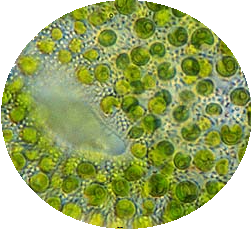Innovative Algae-Based Method Revolutionizes Cell Growth for Medicine

A groundbreaking study from the University of Queensland has introduced a novel method of cell cultivation using a specific strain of algae, Chlorella BDH-1, which promises to enhance the process of growing tissue cells for medical applications, particularly for burn victims. This innovative approach not only accelerates cell growth but also reduces reliance on costly additives, potentially transforming the landscape of regenerative medicine and cultivated meat production.
Dr. Melanie Oey, a leading researcher at the Institute of Molecular Bioscience, spearheaded this study, which was published in the Biotechnology Journal in July 2025. According to Dr. Oey, 'Our work shows muscle cells co-cultivated with the algae grow faster, live longer and require fewer expensive additives.' The findings indicate that the use of Chlorella BDH-1 can lead to more than an 80% increase in cell growth and a threefold increase in usable cells while extending the viability of cell cultures. Furthermore, this method reduces the need for animal-derived cells by 50%, addressing ethical concerns associated with traditional cell culture techniques.
Historically, tissue engineering has faced challenges due to the high costs and complexity of growing mammalian cells in laboratory settings. Conventional methods often require expensive nutrients and can produce substantial waste. The incorporation of algae into the cultivation process creates a symbiotic environment where the algae supply oxygen and remove waste, thereby fostering healthier cell growth. Dr. Oey emphasized, 'In the human body, blood delivers oxygen and removes waste, but in a lab setting, you don't have that system. By adding algae, we're essentially creating a mini-symbiosis.'
The implications of this research extend beyond regenerative medicine. With the growing global population demanding more protein, the method could significantly impact the production of lab-grown or cell-cultured meat, which has recently gained regulatory approval in Australia. Dr. Oey noted, 'Growing meat in the lab is expensive, largely due to the nutrients and oxygen the cells need and the waste they produce.' The algae-based cultivation method offers a more sustainable and cost-effective alternative, potentially making cultivated meat a viable solution to meet protein needs without the environmental drawbacks of traditional animal farming.
In addition to regenerative medicine and meat production, the Chlorella BDH-1 strain has potential applications in pharmaceutical manufacturing, enabling companies to grow and test cells more efficiently. This efficiency could reduce overhead costs and streamline drug development processes, benefiting both companies and patients alike.
Dr. Oey's research received accolades from various experts in the field. Dr. Sarah Johnson, a Professor of Cellular Biology at Harvard University, stated, 'This research represents a significant advancement in biotechnological applications, merging sustainable practices with medical innovation.' Similarly, Dr. Robert Smith, Director of the Bioengineering Institute at Stanford University, remarked that such breakthroughs could redefine how we approach cell culture in laboratories.
As the demand for ethical and sustainable solutions in medical and agricultural sectors increases, the adoption of algae-based cell cultivation techniques may pave the way for a new era of biotechnological applications. With ongoing research and potential regulatory support, the future of this innovative method appears promising, offering solutions to both medical and environmental challenges. The University of Queensland's pioneering work exemplifies the potential for nature-inspired innovations to address critical global issues in health and food production.
In conclusion, the integration of algae into cell cultivation reflects a transformative shift in biotechnology, promising not only more efficient production methods but also a significant reduction in ethical concerns associated with traditional practices. As researchers continue to explore the potential of Chlorella BDH-1 and other algae strains, the future of regenerative medicine and sustainable food production may become more interconnected than ever before. The implications of this research are vast, and its successful implementation could lead to a more sustainable, ethical, and efficient approach to cell-based technology.
Advertisement
Tags
Advertisement





